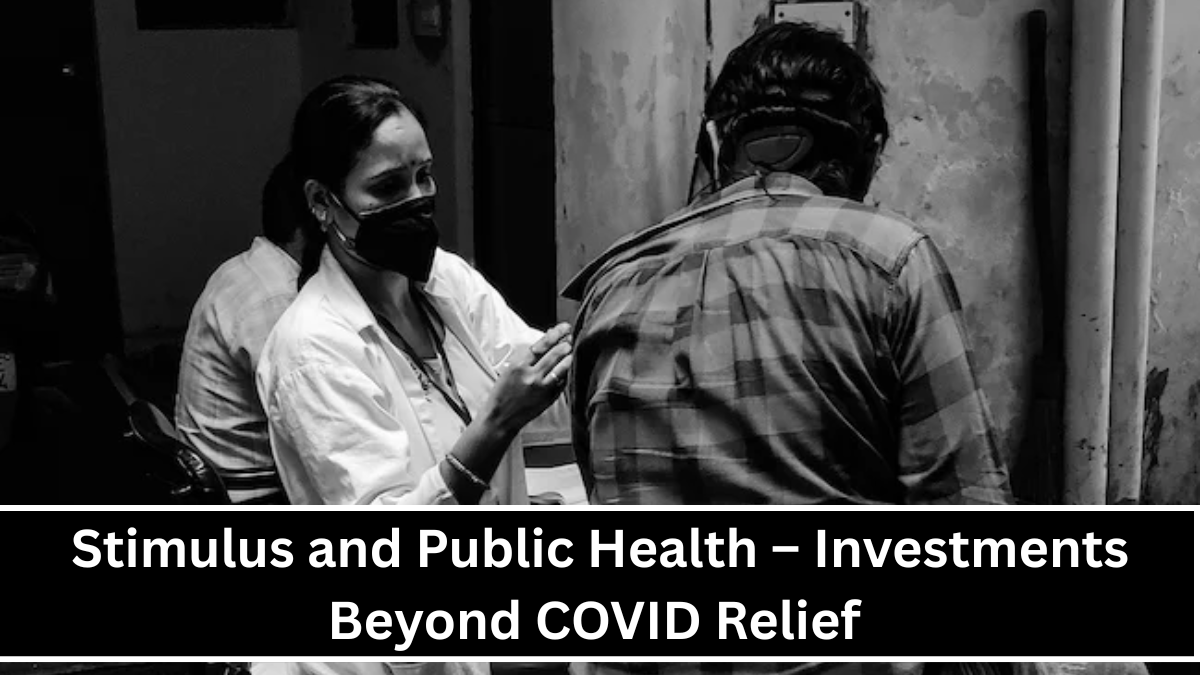When we hear the word “stimulus,” many of us think of direct payments during COVID-19. But stimulus is much more than that. It’s also about how the government spends money to improve the country’s health, economy, and future. During the pandemic, public health became a top priority, and stimulus packages helped fund emergency response, vaccine rollouts, and medical supplies. But now that the emergency is over, a big question remains—how can stimulus continue to support public health beyond COVID-19? This article explores how smart government investment can strengthen health systems, prepare for future challenges, and improve everyday life.
Key Investment Focus: Public Health as National Infrastructure
Just like roads, power, and schools, public health is a part of national infrastructure. The pandemic showed us how fragile our healthcare system can be when stressed. Stimulus spending during COVID-19 helped with short-term goals—like hospital beds, PPE, and vaccine distribution—but long-term investments are now needed.
These long-term efforts include building stronger local health departments, improving digital health systems, funding disease research, and increasing training for healthcare workers. Stimulus money can also be used to upgrade clinics in rural areas, improve clean water systems, and support mental health programs. When public health is treated like critical infrastructure, the whole population benefits—not just during a crisis, but all the time.
Where Stimulus Can Go Beyond COVID
Stimulus can also help address health challenges that existed before the pandemic—and became worse during it. For example, obesity, diabetes, mental illness, and addiction are public health problems that cost billions each year. By using stimulus funds to support prevention and education programs, the government can reduce long-term healthcare costs. Schools can receive funding to promote healthier food and exercise. Communities can get support for building parks, walking paths, and clinics. Telehealth, which grew during COVID-19, can continue expanding to reach remote populations. Stimulus dollars can also support research into future diseases, preparing the country for the next outbreak.
Most importantly, stimulus investments can reduce health inequalities. People in low-income or minority communities often suffer worse health outcomes. With the right investments, we can build a system that is fairer and stronger for everyone.
Stimulus funding should not end with COVID-19. Instead, it should evolve to create a healthier and more prepared society. By treating public health as a long-term investment, governments can reduce medical costs, save lives, and improve quality of life across the country. Just like bridges or schools, health systems need funding, maintenance, and upgrades. Investing in healthcare today means a stronger, safer nation tomorrow. The next health crisis may come at any time—stimulus funds spent wisely now can help us face it with confidence.
FAQ’s:
Q1. What is stimulus funding in public health?
A1. Stimulus funding refers to government money spent to boost the economy and public systems. In public health, it supports hospitals, vaccines, research, and more.
Q2. How was stimulus used during the COVID-19 pandemic?
A2. It helped pay for emergency healthcare supplies, vaccine development and distribution, COVID testing, and financial support for families and businesses.
Q3. Why is it important to continue stimulus spending for health?
A3. Health problems don’t stop with COVID. Ongoing investment helps prepare for future diseases, improve daily healthcare, and fix long-standing health gaps.
Q4. What areas can benefit from new stimulus investments?
A4. Areas like mental health, rural clinics, disease research, clean water, and digital health tools can all be improved with stimulus support.
Q5. How does public health relate to the economy?
A5. A healthy population is essential for a strong economy. When people are sick, they can’t work or study, and that slows down the country’s growth.
